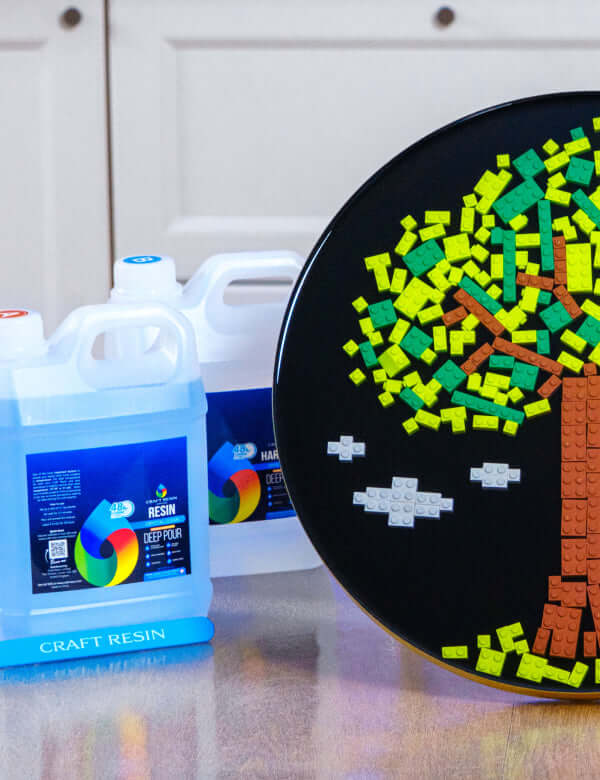Let's start with ripples effects:
These can be very subtle, or they can be quite prominent. This goes for all imperfections in your resin projects. Sometimes you can hardly notice them, and other times you’ll see them straight away and know something has gone wrong. Ripples look like just that, ripples, waves or a kind of orange peel effect in your work, basically not a flat perfect finished surface.

In order to avoid ripple effects from happening you need to first ensure that the temperature in your workspace and curing area stays constantly between 21-24C or 70-75F. If it dips below these temperatures even up to 24 hours into the curing process then ripples can occur.
Secondly make sure that no dust or dirt particles can get into your resin project, place a cover over it to keep it dust and dirt free. This should help it stay clean and also ripple free.
Third, make sure that you do not over torch your resin projects. We know that surface bubbles can be very annoying, and you want to remove them instantly, but you need to do this in a gentle way so that you disperse the bubble, but don’t then cause a ripple effect from over torching your work.
Make sure the torch is held the right distance away from your project and use sweeping movements to wave it across your work, don’t leave it on one section for long and don’t get it too close. Heat equals faster curing, once the ripples appear, they will be very hard to get rid of.
Lastly, have your mold, substrate the same temperature as the resin mix to avoid temperature shock which can then result in the resin rippling or shrinking back. When the resin mix is warm and it then hits the cooler surface area it stops it self levelling and flowing correctly which creates these kind of effects.

Moving onto Fish Eyes, Pin Holes and Separations:
These descriptions pretty much look like what they sound like, they are any variation of resin leaving a gap, hole or parting in your projects. Normally on artwork these separations will occur around the edges, but they can also be found elsewhere.
Keeping your work area and your mold/substrate clean free from dust/dirt particles can help these issues to not occur in the first place. Make sure no one passes through your workspace leaving a trail of dust/dirt particles where you are working and also during the curing phase, cover your work and close the door to the room if possible. Ensure your working environment is as clean as possible.
Separations can also occur when oils are found on the substrate/mold. Make sure that the project you are going to be pouring resin onto/into is free from any oils and is completely dry before pouring. If you have used a washing up liquid to clean your molds, be careful to make sure it is all removed and clean before use.
It can be very tempting during the curing process to touch, or fiddle with your work. Please do not do this or move your project at all during the first 24 hours. Dirt/dust can easily get into your project if you do touch it and walk around it.
The best thing to do is to leave your work in the room to level and flatten out and then check on it a short while later and address any small imperfections like surface bubbles or animal hair that may have floated onto your project.
If you do notice a small hair, or dust particle in the resin mix curing, if it’s at the initial stages you can remove this gently with a tooth pick, or a pair of clean tweezers and then leave the resin to self level again, or if it’s slightly too hard for this then pop a tiny drip of resin over the section that’s just been removed. If it’s sticking out, you can sand this down once fully cured and apply another topcoat which will sort the imperfection out.
If you do notice any areas of your project that do become separated during the curing process, please don’t try to spread these out. All you need to do is pop a small amount of epoxy resin over this gap and then allow this to self level and merge with the already curing resin.
Imperfections can and do happen, if they do they can usually be fixed so please don’t panic. Every part of your resin journey is a learning curve and so as you go along you’ll find ways of fixing imperfections, or prepping your workspace so they don’t happen and find ways and areas to work in that suit you.
Keep going, keep trying, keep evolving into the amazing resin artist we know you are!
Team Craft Resin







